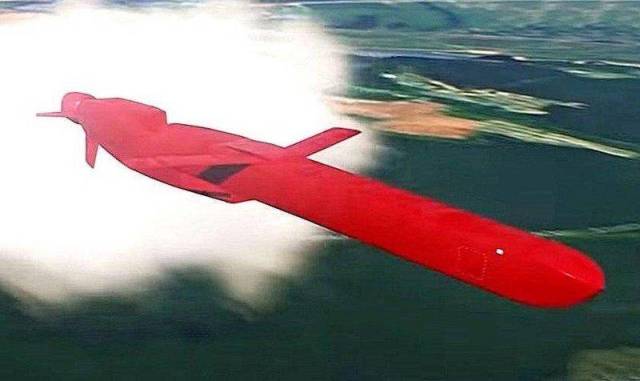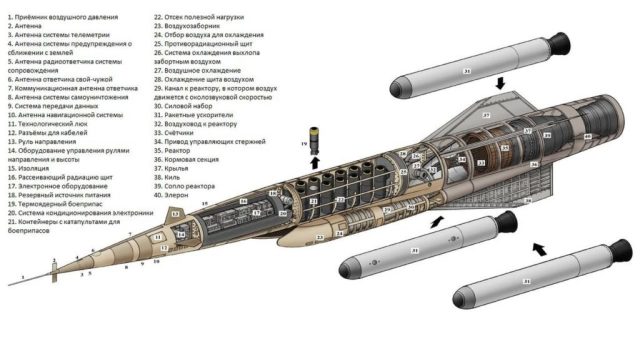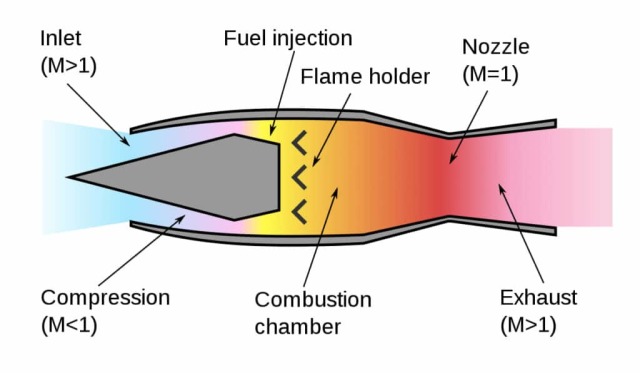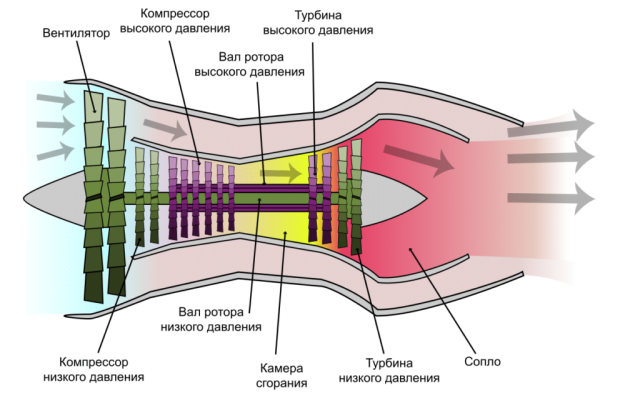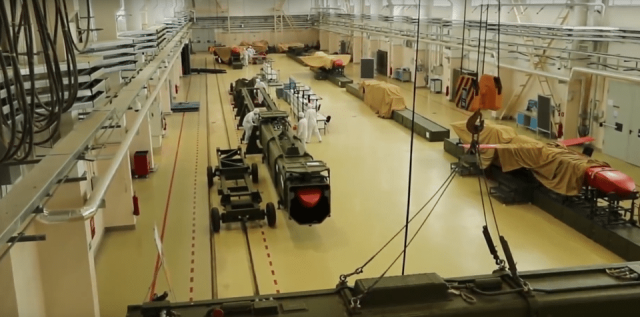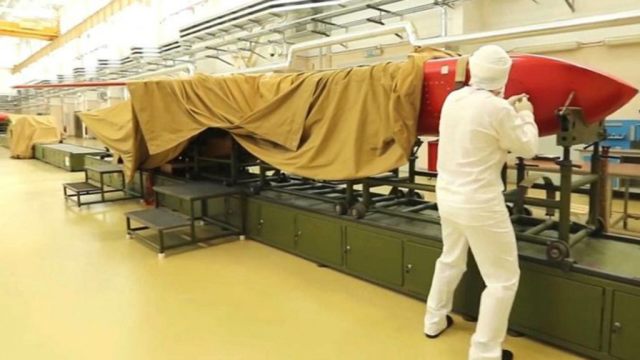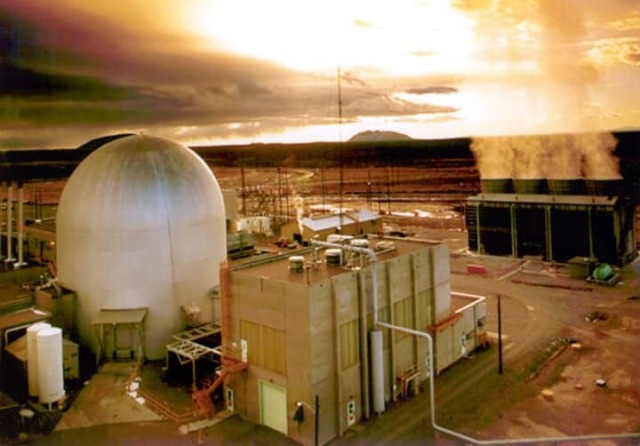Journalists of The New York Times newspaper — based on satellite photos — suggested that Moscow plans to test the Burevestnik rocket with a nuclear engine. The Western edition emphasized that this is a "mini-Chernobyl" — an object with a dangerous "atomic exhaust". However, the actual technical appearance of this weapon is completely different. However, his strategic goals are not as obvious as it may seem.
A few years ago, when the "Petrel" was announced for the first time, most Western media — and after them all Russian, with the exception of one — assessed the project as a simple repetition of an ancient American idea. As Michael Kofman of the Wilson Center ironically outlined this line of thought: "The United States tried to build [the Pluto rocket] in 1964-1967, the project turned out to be meaningless, and therefore Russia decided to try to build it in 2019." The sarcasm of the American analyst did not arise from scratch: no one will try to repeat someone else's senseless project.
The old American idea of the Pluto project was a ramjet engine, where air enters the nose of a rocket, passes through rods with nuclear fuel in its reactor, heats up, and then is pushed back.
Due to this scheme, Pluto should have a high supersonic speed, and due to the fact that the weight of fuel for the reactor is extremely small, it should have an unlimited range.
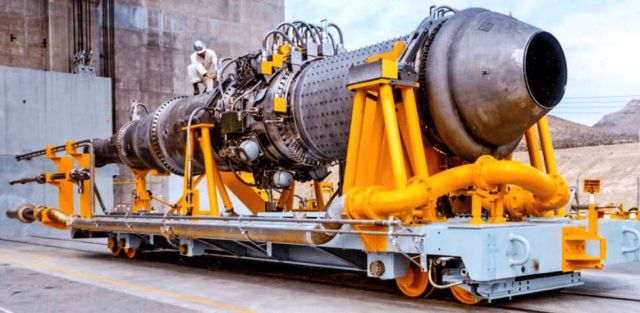 |
| Tory-IIC, a prototype of a nuclear air-jet engine for the Pluto project. |
| Source: Wikimedia Commons |
The project really didn't make sense. One look at the resulting monster is enough to understand why. It is very large, so it is easily visible from the air (and from space) in all ranges. The thermal power of the 600 megawatt reactor did not just make the weapon bulky and unwieldy, it also could not be launched quickly. In order for the "direct current" to work, heated tubes with fuel are needed, and it was not so easy to bring them to the desired mode quickly.
Intercontinental ballistic missiles were more expensive than Pluto, but at the same time they could launch minutes after receiving the order, and not hours later — which made them less vulnerable to a preemptive enemy strike. In addition, they were faster, which means it was more difficult to intercept them.
Naturally, it was also, in a sense, a flying "mini-Chernobyl". The air passing through the reactor core "grabbed" neutrons, which caused radioactive carbon isotopes to appear in it, and so on. It is not surprising that this project did not reach the air tests.
Given all this, Kofman's reaction is understandable. "Petrel", judging by the available data, has practically nothing in common with the old American project.
What is the real technical appearance of the "Petrel"?
It is known from photos and videos that the "Petrel" has almost straight wings of noticeable length. The "Pluto" has triangular and strongly beveled wings, which is logical for a speed of three thousand kilometers per hour, for which it was originally calculated.
Straight wings exclude supersonic speeds for the Russian rocket, and the state media directly call it "subsonic" for good reason. She is. At first glance, this is a problem: it turns out that it is three to four times slower than Pluto.
At a second glance, everything is completely different. If there is no need for supersonic, then instead of an energy-consuming ramjet, a subsonic gas turbine engine can be used — with a low temperature of atmospheric air heating, taken by the rocket from the outside, heated from the reactor and ejected back. To allow the air in the turbine to heat up to + 850 degrees is enough. This is an absolutely feasible temperature for metal heat exchangers.
And if so, now there is no need to pass air through the reactor core. It remains closed, and it can be cooled with molten metal.
Why them, and not something else? A cruise missile should be as compact as possible. Cooling it with water or gases, while making it compact, will not work: the heat sink from the unit volume will be limited, so the reactor core will have to do more. Liquid metals make it possible to make an active zone the size of a large oblong watermelon. Actually, back in the 1960s, the USSR began launching similar nuclear reactors - on fast neutrons, cooled with a sodium-potassium liquid mixture — into space.
Still, it is doubtful that the Burevestnik reactor in the first circuit contains sodium-potassium (usually 22 percent sodium in such mixtures, the rest is potassium). There are two reasons for this. Firstly, sodium-potassium burns extremely quickly and energetically when in contact with air. Any leakage of it leads to a violent fire or explosion (it is enough to recall the big explosion on Y-12 in the USA in 1999).
Secondly, in the incident of 2019 in Nenox, it was about testing a radioisotope energy generator (RTG). According to the official data of Roshydromet, traces of strontium-91, isotopes of barium and caesium were recorded in the air after this incident. Such isotopes are formed during the decay of noble gases "vented" at certain reactor operating modes to the outside, since radioactive contamination from them (with this release mode) is small and does not threaten human health. Therefore, it is not difficult to understand why in the West the incident in Nenox was considered part of the testing of the components of the Burevestnik, including its reactor.
It is known that five VNIIEF scientists were killed in the incident from a chemical (non-atomic) explosion. They are not engaged in reactors, but they are engaged in RTGS (and also nuclear ammunition). Why does the Burevestnik reactor need RITEG?
And this is "secondly": the RTG there makes sense mainly if it is used to maintain a cruise missile in a state of constant readiness for launch.
The fact is that sodium-potassium has a good analogue: pure metallic sodium. Its positive features are that sodium is much less dangerous when in contact with air. Yes, it also burns when in contact with air, but moderately enough in intensity, and, last but not least, it will not explode (and potassium-sodium can under certain conditions — see USA).
Sodium has only one disadvantage: in order for it to be liquid, it must somehow be kept warmed up to almost 100 degrees. Sodium-potassium becomes liquid at temperatures below zero Celsius, so it can easily be heated with an electric heating element. But it will be difficult to heat sodium up to a hundred degrees in the same way: you need a lot of electricity. Where can I get it in remote places where nuclear weapons are often deployed? What happens if the diesel generator breaks down there - how to execute a sudden start command?
RITEG is quite logical here: it will be able to keep sodium liquid for many years without a chance of breakage (there is nothing to break in RITEG) and without logistical difficulties and maintenance. An ideal aid for the container storage of the "Petrel".
Not "mini-Chernobyl"
So, from the available data, it turns out that the nuclear reactor on board the Burevestnik is exactly "sodium". Other heat carriers are not suitable, because the heat transfer from them is much worse than sodium or sodium-potassium.
The fact is that sodium fast neutron reactors (and they are all fast neutrons) have a strong negative feedback. That is, if you somehow managed to overheat the core of such a reactor, then the fuel density will begin to fall in it, due to which the nuclear reaction will self-slow down.
Emergency shutdowns in such systems are possible, but the destruction of the reactor vessel during them is very unlikely. There will also be no activation of air during the normal operation of the flying reactor: the neutron flux outside the reactor core is much lower than in it. That is, unlike Pluto, the activation of carbon and other things in the air at the Petrel will be minimal.
Note: if the versions of the Western press about the incident in Nenox are correct, then this confirms the greater safety of such a reactor. In air samples, including those taken in Norway, there are traces of only gaseous "exhaust" from the reactor, but there are no traces of leakage of liquid or solid materials. That is, the reactor vessel remained intact in case of a possible incident. Actually, it is not surprising: for the reasons described above, the sanitary zone of sodium reactors at nuclear power plants is not more than a kilometer for a reason (while at nuclear power plants with VVER reactors it is 25 kilometers).
But what is it then and why is it needed?
The development raises the most questions not in the sense of its radiation hazard — as we have shown above, it is very small. The key question is: why was such a development conceived at all?
At first glance, a subsonic cruise missile is easier to shoot down than a ballistic missile. The missile defense systems available outside of Russia cannot yet steadily shoot down even ICBMs of past generations. At the same time, a ballistic missile will reach the target in 20-30 minutes, and not in a dozen hours, like the Petrel.
In addition, Russia already has cruise missiles with a range of 6,500 kilometers — the so-called X-DB on the Tu-160. Then why do we need new, nuclear ones? Logically, they will be clearly more expensive.
Let's start with the first question. Ballistic missiles really fly faster and are more difficult to shoot down. But they also have disadvantages: the number of their "carriers" — mines, submarines or mobile ground complexes of the Yars type — is limited, and it is not easy to disguise them. If the enemy strikes the first blow suddenly, it is difficult to exclude the possibility of hitting part of the ballistic missiles. How then to strike back?
"Petrel", judging by its appearance, is clearly less than a meter in diameter and no more than a dozen meters in length. The mobile launch complex for him will be compact and small. And even a stationary launch container with it is much easier to disguise and disperse in a sparsely populated area than a huge intercontinental ballistic missile.
Conventional cruise missiles are worse in this respect. The fact is that at ranges from eight thousand kilometers and above, the mass and dimensions of chemical-fueled cruise missiles begin to grow very quickly. In fact, they can already be made two—stage - they come out so big. A two-stage cruise missile will be similar in size to the "Petrel", if not more.
Straightening the balance
The most important task of the "Petrel" may be to correct the balance. The United States does not have cruise missiles with a range even half that of the farthest Russian ones. But they don't need to: NATO countries have provided the States with opportunities to deploy cruise missiles in Europe. The now defunct start-up does not prevent nuclear warheads from being placed there now. In this case, after the first wave of nuclear strikes, Washington can also strike with cruise missiles from carrier bombers on duty in the air.
But Russia, in response, can only cover Europe with cruise missiles with thermonuclear warheads. No, the Tu-160 can, of course, reach New York or even Los Angeles without departing from Russian territory. But more distant American cities and military bases — even Washington, not to mention Dallas — will not be able to hit without great risks.
In addition to the range of the Tu-160 missiles, there is also the question of price. The US Pluto was supposed to cost $34 million apiece. According to the calculations of Western experts, the subsonic "Petrel" should have a hundred times weaker reactor. Taking into account the smaller dimensions, it will cost a maximum of several million dollars in the series. That is, even a dozen of such missiles will be much cheaper than one Tu-160 at the purchase price. Given that the "Petrel" does not need any kerosene or crews, it will be even cheaper to operate.
 |
| If we take the weight of the nuclear warhead of the Burevestnik for 500 kilograms, the constructive perfection of Russian nuclear warheads for the 1980s, then their power will be ~ 500 kilotons. It is dangerous for a cruise missile to rise above 50 meters, so the height of a nuclear explosion is unlikely to be noticeably higher. In this case, the explosion in the conditions of Los Angeles will lead to serious damage by an explosive wave and gamma rays of only 40 square kilometers. But the area where nuclear precipitation will fall with an intensity that excludes the survival of an unprotected person will be 430 square kilometers — that is, it will be an order of magnitude larger. A thousand such cruise missiles will give a total area of nuclear fallout in the United States of ~ 400 thousand square kilometers, which is one and a half times the area of local urban development. |
| Source: Wikimedia Commons |
Recall: a conventional serial ICBM for a dozen warheads in Russia costs a little less than a hundred million dollars. Together with a mine, a mobile complex on wheels or a carrier boat, this price may increase several times. Even a thousand "Petrels" — which need only a simple ground launcher to launch — will cost as many as several dozen ICBMs. This is not a very large figure against the background of the total cost of nuclear arsenals.
For this money, Burevestnik offers two opportunities that Russia cannot get without it. First, it allows you to respond to a strike with American cruise missiles with nuclear warheads directly. They will now be able to reach not only the European allies of the United States, but also the States themselves, previously available only to ICBMs.
Secondly, in the conditions of a nuclear war, the Petrel may become the last trump card of de-escalation. After the exchange of ICBM strikes, both sides will remain without them: everyone will strive to fire ballistic missiles as quickly as possible so that the enemy does not have time to hit their carriers with their missiles at the very beginning of the war.
And now both sides remain without ballistic missiles with nuclear warheads. But at the same time, Moscow will have time to lift into the air — for which it takes a few minutes — for example, a thousand cruise missiles with nuclear warheads and unlimited range.
 |
| A shot from the movie "Dr. Strangelove, or How I stopped being afraid and fell in love with a bomb." |
| Source: © Columbia Pictures |
This is quite an effective lever of influence on the enemy in order to de-escalate. It is much easier to ask "Say peace" and I will withdraw a thousand nuclear missiles that are still circling in the air" than to ask "Say peace" without the same argument. Moreover, from the point of view of radioactive contamination in the explosion area, each such missile is much more dangerous than a nuclear warhead delivered by a conventional ICBM (see the picture above).
Is it reasonable to bet on the "Petrel", which in the West, due to its nature, is called a "second strike weapon"? Will NATO leaders refuse the proposed peace even under the pressure of such an argument? We can only find out about this for sure in the event of a nuclear war. Let's hope that the very deployment of such weapons, planned for 2027-2028, will deprive us of this opportunity, turning the thoughts of the inhabitants of high offices away from such a conflict.
